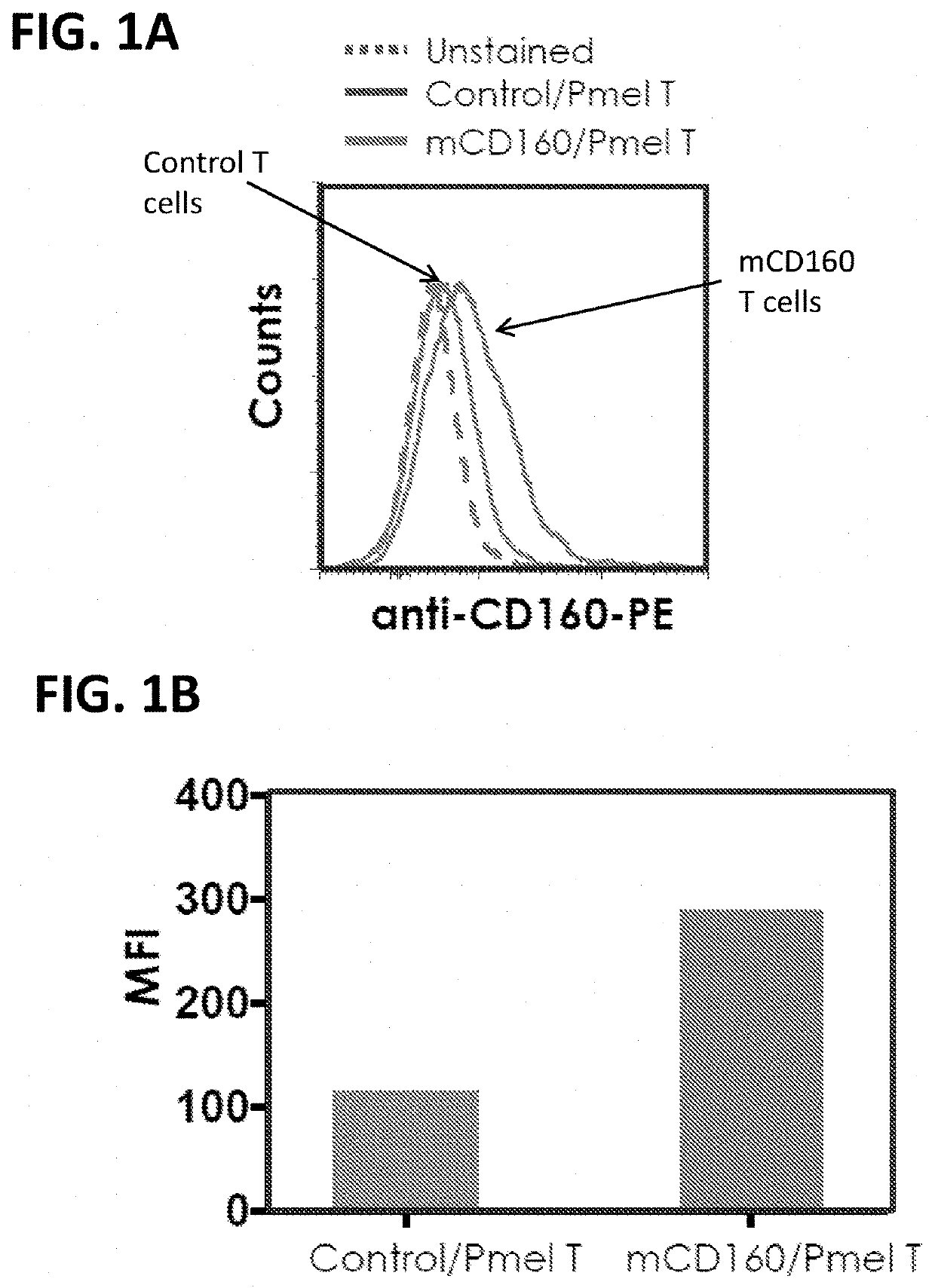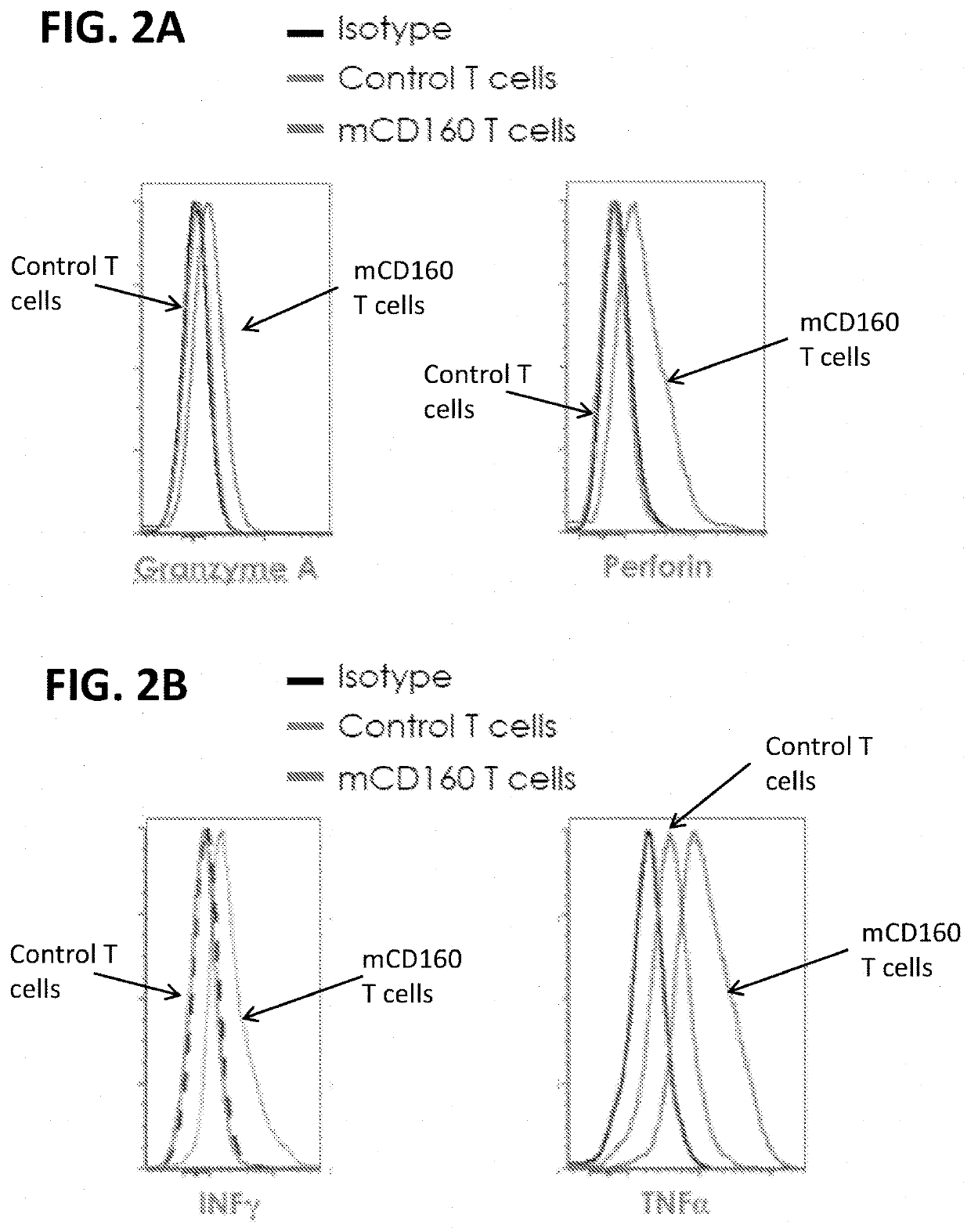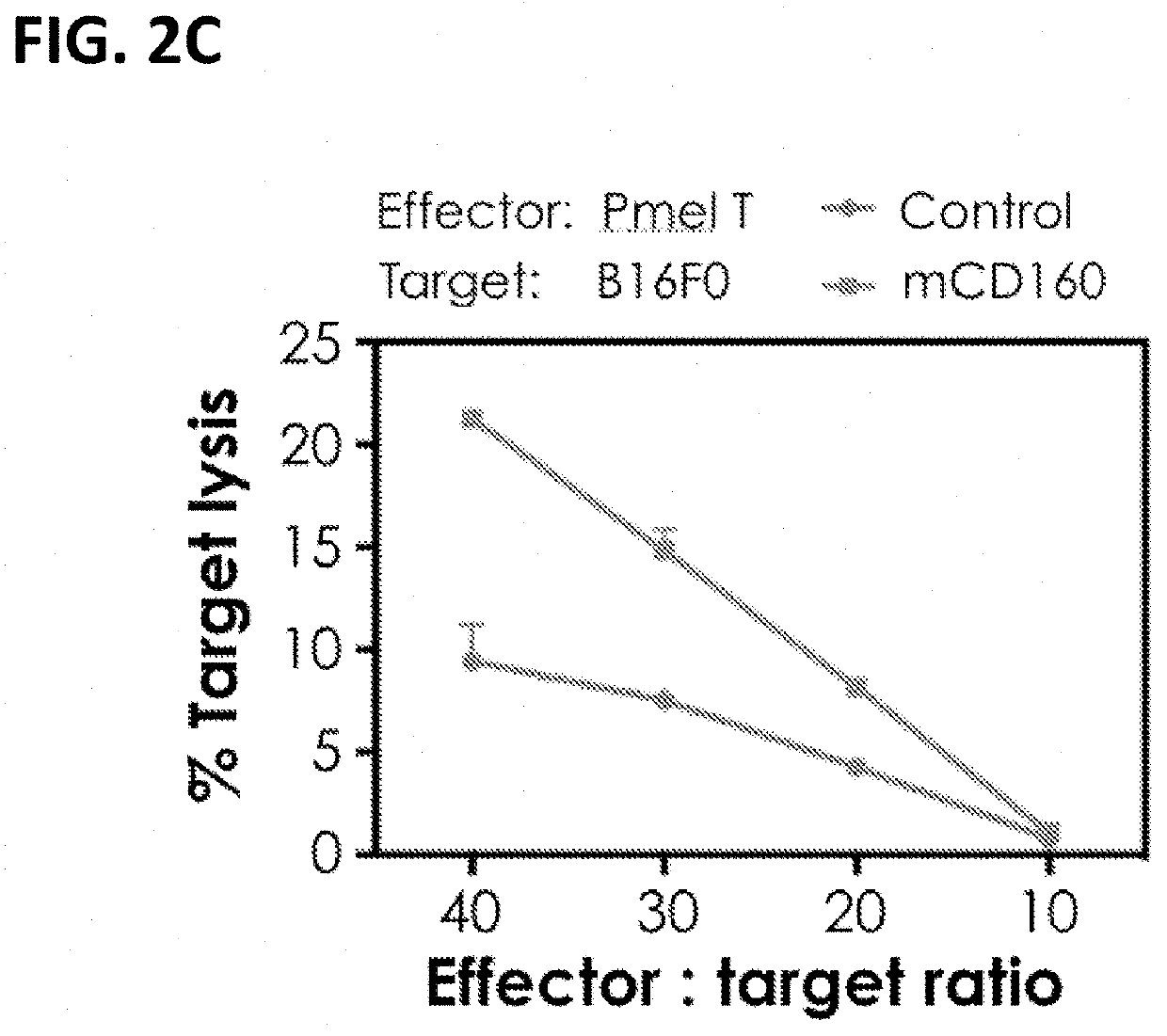Methods of modulating cd160 function in the antigen-specific immune cell and uses thereof
- Summary
- Abstract
- Description
- Claims
- Application Information
AI Technical Summary
Benefits of technology
Problems solved by technology
Method used
Image
Examples
example 1
xpression of mCD160 in Pmel T Cells
[0366]To examine the function of CD160 in immune cells, the GPI anchored form of the mouse CD160 was ectopically expressed in anti-tumor T cells and quantified by FACS analysis.
[0367]Specifically, the mouse full-length CD160 (mCD160) was cloned into a MSCV-based retroviral vector and fused with a GFP reporter through a P2A spacer, allowing independent synthesis of CD160 and GFP proteins (FIG. 1A). The mCD160 virus was then transduced into Pmel T cells, which bear a TCR recognizing the mouse homologue of human melanoma antigen GP100.
[0368]As indicated by FACS analyses, ectopic expression of CD160 resulted in an approximately 2.5-fold increase of CD160 expression on the Pmel T cells, which normally expressed a low endogenous level of CD160 (FIG. 1B, 1C).
example 2
ression Potentiates the CTL Function of Pmel T Cells Against B16F0 Melanoma Cells in Culture
[0369]To show the effect of ectopic CD160 expression on cytolytic function of T cells, the expression of Granzyme A and Perforin; the expression of inflammatory cytokines; as well as the killing activity of CD160-modified Pmel T cells were measured. Mock-infected Pmel T cells were used as a control.
[0370]Specifically, the mCD160 virus was transduced into Pmel T cells as described in Example 1, and the expression of Granzyme A and Perforin was measured by FACS. Granzyme A and Perforin are two essential proteins in granule exocytosis pathway for T cell- and NK cell-mediated killing. As shown in FIG. 2A, the expression of Granzyme A and Perforin were increased compared to control Pmel T cells, indicating that the exogenous mCD160 potentiated the intrinsic CTL function of tumor-specific T cells.
[0371]The expression profiles of inflammatory cytokines IFN-γ and TNF-α were measured in CD160-modified...
example 3
ression Potentiates the Control of B16F0 Melanoma in Mice by Pmel T Cells
[0374]To examine whether ectopic CD160 can potentiate the tumor-control activity of antigen-specific T cells in vivo, CD160-modified Pmel T cells were adoptively transferred into recipient mice bearing subcutaneous B16F0 melanoma tumor.
[0375]Specifically, 1×105 B16F0 cells were injected subcutaneously into 6 to 8 week-old female C57BL / 6 mice. Prior to adoptive cell transfer, mice were randomized to ensure that there were no size biases at the onset of the experiments. In one experiment, a single dose of 0.1, 0.2, 0.3, or 0.4-million of CD160-modified Pmel T cells or 0.3-million of control Pmel T cells were adoptively transferred into tumor-bearing mice at Day 8 post-implantation (FIG. 3A). Mice were checked twice weekly for tumor formation by palpation, and tumor areas measured by caliper measurement. The tumor areas represent the mean measurements of at least 5 mice per group (+ / −SEM, two-tailed t-test). As sh...
PUM
| Property | Measurement | Unit |
|---|---|---|
| Fraction | aaaaa | aaaaa |
| Immunostimulation | aaaaa | aaaaa |
| Cytotoxicity | aaaaa | aaaaa |
Abstract
Description
Claims
Application Information
 Login to View More
Login to View More - R&D
- Intellectual Property
- Life Sciences
- Materials
- Tech Scout
- Unparalleled Data Quality
- Higher Quality Content
- 60% Fewer Hallucinations
Browse by: Latest US Patents, China's latest patents, Technical Efficacy Thesaurus, Application Domain, Technology Topic, Popular Technical Reports.
© 2025 PatSnap. All rights reserved.Legal|Privacy policy|Modern Slavery Act Transparency Statement|Sitemap|About US| Contact US: help@patsnap.com



